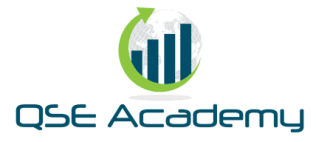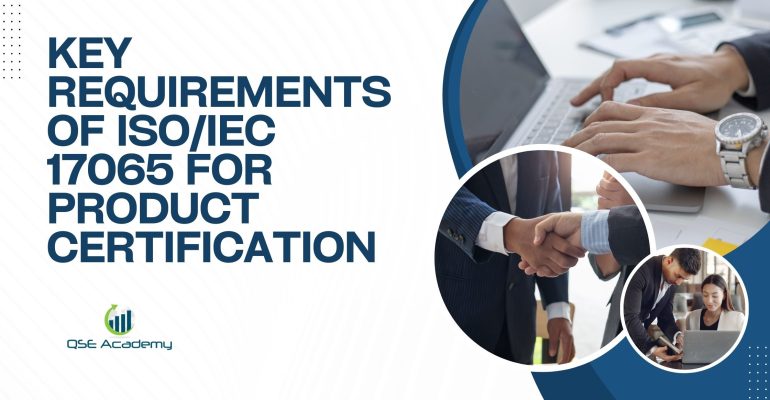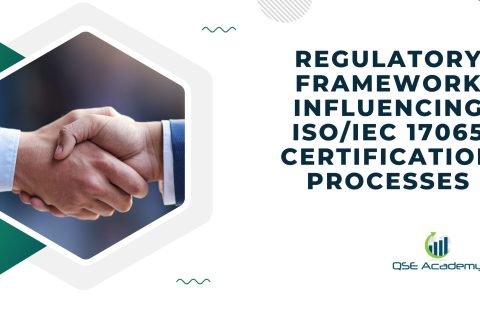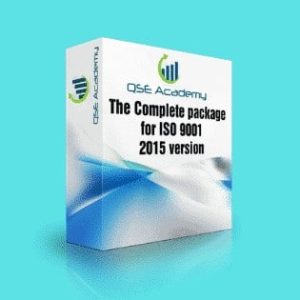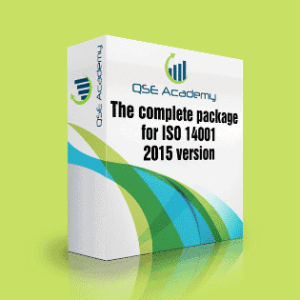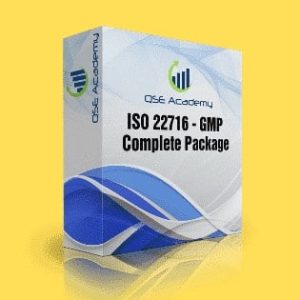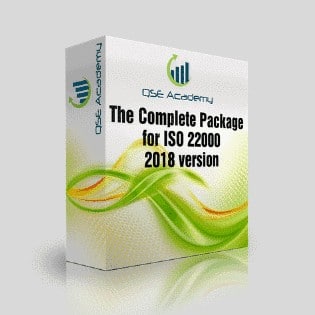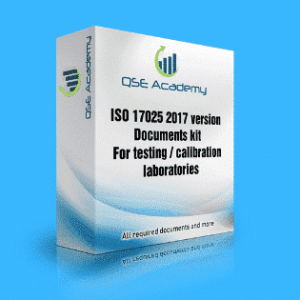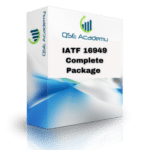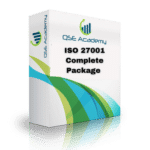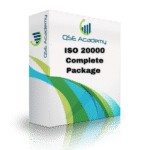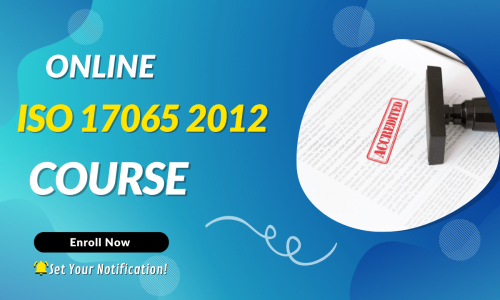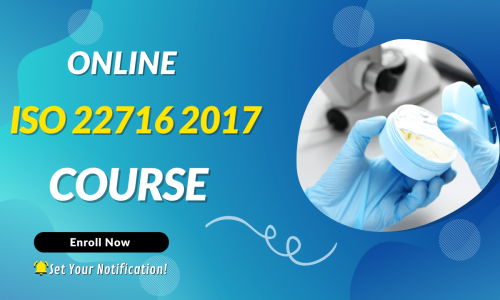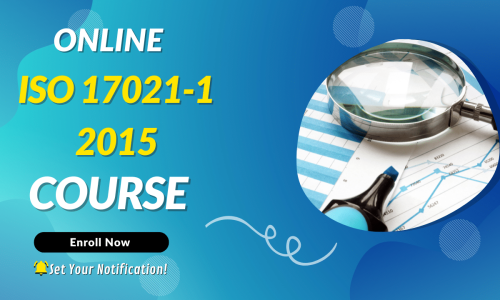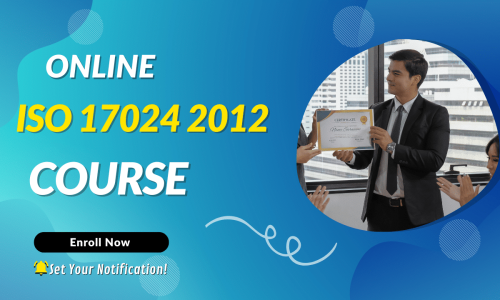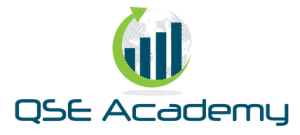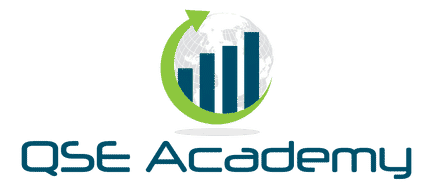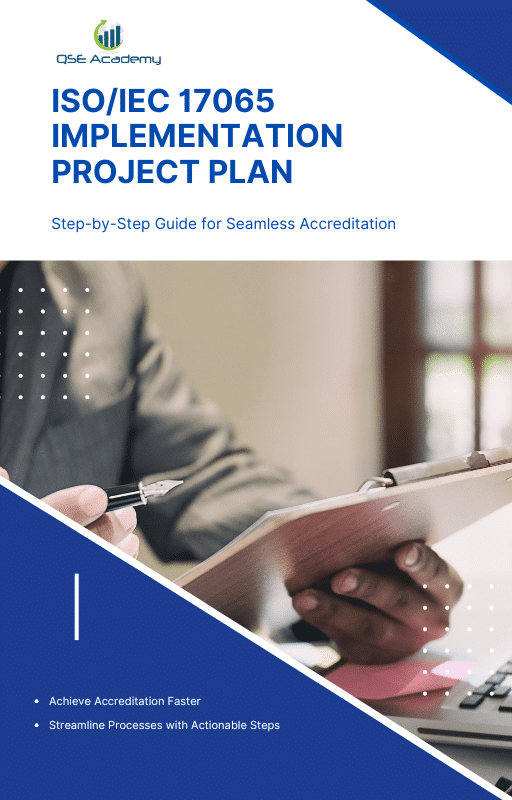Key Requirements of ISO/IEC 17065 for Product Certification
Key Requirements of ISO/IEC 17065 for Product Certification
If you’re in the business of certifying products, you’ve probably heard about ISO/IEC 17065. But what exactly does it mean, and why is it such a big deal? Simply put, ISO 17065 requirements for product certification ensure that certification bodies operate fairly, consistently, and transparently. In other words, it’s the standard that keeps product certification credible and trustworthy.
Think about it—when a product gets certified, whether it’s organic food, medical devices, or electrical equipment, consumers and regulators need to trust that the certification wasn’t just handed out randomly. That’s where ISO 17065 comes in. It sets clear guidelines and requirements for certification bodies, making sure they evaluate products fairly and without bias.
But here’s the catch: ISO 17065 compliance isn’t just about having a certification process—it’s about ensuring that process is structured, transparent, and well-documented. Certification bodies need to meet specific requirements related to impartiality, staff competency, risk management, and complaint handling.
In this guide, we’ll break down the key ISO 17065 requirements for product certification, explain why they matter, and share best practices for compliance. Whether you’re new to ISO 17065 or looking to strengthen your certification body’s processes, this guide will help you understand exactly what’s required and how to implement it effectively.
Ready to dive in? Let’s explore what it takes to ensure credible and ISO 17065-compliant product certification!
Understanding ISO 17065 and Its Role in Product Certification
Before diving into the ISO 17065 requirements for product certification, let’s take a moment to understand what ISO/IEC 17065 is and why it’s so important.
Imagine you’re buying an organic food product or a safety-certified electrical device. How do you know that the certification label on that product actually means something? That’s where ISO 17065 comes in. It ensures that certification bodies follow a structured, fair, and consistent approach when certifying products, so consumers, businesses, and regulators can trust the certification process.
ISO/IEC 17065 is an international standard designed for organizations that certify products, processes, or services. It outlines how these certification bodies must operate to ensure:
✔ Impartiality – Certifications must be free from conflicts of interest and external influence.
✔ Competence – Certification bodies must have the right expertise, training, and processes to evaluate products correctly.
✔ Consistency – Every certification decision must be based on clear, documented criteria, not personal opinions or inconsistent methods.
✔ Transparency – Certification bodies should maintain detailed records so that certification decisions can be reviewed and justified.
Without ISO 17065 requirements for product certification, there would be no universal benchmark for how certification bodies operate. Some might apply loose criteria, while others might have unfair practices, leading to confusion and loss of trust in product certifications.
Why ISO 17065 Compliance Matters
Following ISO 17065 requirements for product certification isn’t just about ticking off compliance boxes—it’s about ensuring that certification bodies operate with integrity and professionalism.
Here’s why compliance is so critical:
✔ Protects consumers – Certified products must meet strict quality and safety standards, ensuring customers get what they expect.
✔ Strengthens market credibility – Companies with ISO 17065-compliant certifications are seen as more reliable and trustworthy by consumers and regulatory agencies.
✔ Ensures regulatory acceptance – Many industries require ISO 17065 certification to meet government or industry-specific regulations.
✔ Reduces liability risks – When certification bodies follow structured, impartial procedures, they reduce the risk of legal issues and certification disputes.
Simply put, ISO 17065 requirements for product certification exist to maintain trust, fairness, and accountability in the certification process. Without them, the value of product certifications would weaken, and credibility in the market could be compromised.
How ISO 17065 Requirements Shape Product Certification
The next step in understanding ISO 17065 requirements for product certification is looking at the specific requirements that certification bodies must meet. These include ensuring impartiality, staff competency, proper documentation, risk management, and an effective complaints process.
Up next, we’ll break down these core ISO 17065 requirements and explain how certification bodies can implement them effectively. Let’s dive in!
Key ISO 17065 Requirements for Product Certification
Now that we understand why ISO 17065 matters, let’s break down the key requirements that certification bodies must follow. These requirements ensure that product certification processes are consistent, fair, and transparent, creating trust in the certifications issued.
If you’re a certification body, meeting these ISO 17065 requirements for product certification isn’t just about passing audits—it’s about building a strong, credible system that ensures products meet reliable and standardized criteria.
Let’s take a closer look at the core ISO 17065 requirements and how they shape a compliant and effective product certification process.
1. Impartiality and Independence
One of the most critical ISO 17065 requirements for product certification is impartiality. Certification bodies must avoid conflicts of interest and ensure that all decisions are made independently.
Imagine a company that certifies its own products—that wouldn’t be fair, right? That’s exactly why ISO 17065 requires strict separation between certification activities and any commercial interests.
How to Ensure Impartiality:
✔ No financial influence – Certification bodies must operate without pressure from manufacturers, suppliers, or competitors.
✔ Independent review committees – Final certification decisions should be reviewed by a neutral team, not the same individuals conducting evaluations.
✔ Conflict of interest policies – Certification bodies must have documented policies to prevent and manage potential conflicts.
🔹 Pro Tip: Regular risk assessments can help identify any threats to impartiality before they become compliance issues.
2. Competency of Personnel
A certification body is only as strong as the team behind it. Another major ISO 17065 requirement for product certification is ensuring that staff members are trained, competent, and qualified for their roles.
Think about it—if someone is certifying medical devices, electrical equipment, or food safety standards, they need to fully understand the technical and regulatory requirements involved.
How to Ensure Staff Competency:
✔ Ongoing training programs – Employees should regularly update their knowledge on new certification standards and regulatory changes.
✔ Clear qualification criteria – Every certification role should have documented competency requirements.
✔ Internal assessments – Periodic evaluations ensure that staff members stay up to date and follow proper certification protocols.
🔹 Pro Tip: Keep detailed training records to demonstrate compliance with ISO 17065 requirements for product certification.
3. Certification Process Requirements
ISO 17065 sets clear guidelines for how certifications should be issued, renewed, suspended, or withdrawn. This ensures that the certification process is structured, repeatable, and transparent.
A certification body can’t just approve or deny certifications randomly—each decision must be based on objective evidence and documented criteria.
Steps in the Certification Process:
✔ Application review – Ensuring the product meets basic eligibility requirements before proceeding with a full evaluation.
✔ Product evaluation – Testing, inspections, or audits to verify that the product meets the required standards.
✔ Decision-making – Certification bodies must have clear decision-making protocols and keep records of how decisions were reached.
✔ Ongoing surveillance – Some certifications require periodic reassessments to ensure continued compliance.
✔ Handling certification suspensions or withdrawals – If a certified product no longer meets the standards, the certification must be revoked following documented procedures.
🔹 Pro Tip: A structured decision-making framework ensures that every certification is based on solid evidence, reducing compliance risks.
4. Risk Management and Confidentiality
Certification bodies handle a lot of sensitive information—product specifications, test results, and company data. Protecting this information is a key ISO 17065 requirement for product certification.
At the same time, certification bodies need to identify and manage risks that could impact their ability to certify products fairly.
How to Manage Risk and Confidentiality:
✔ Develop a risk management plan – Identify potential risks (e.g., impartiality threats, data breaches, operational failures) and outline mitigation strategies.
✔ Implement strong data protection policies – Ensure that client data is secure, with restricted access and confidentiality agreements in place.
✔ Regularly review and update risk controls – Risks change over time, so certification bodies should continuously monitor and improve their risk management practices.
🔹 Pro Tip: If an auditor asked, “How does your organization protect confidential product data?”—would you have a clear answer? If not, it’s time to tighten up your confidentiality policies.
5. Handling Complaints and Appeals
A certification body’s job doesn’t end once a product is certified. If a manufacturer disagrees with a decision or a stakeholder raises a concern, there must be a clear process for handling complaints and appeals.
This requirement ensures that certification decisions can be challenged and reviewed fairly, rather than being seen as final and unquestionable.
Best Practices for Complaints and Appeals:
✔ Establish a formal complaints process – Make it easy for applicants to submit complaints or appeal certification decisions.
✔ Ensure independence in reviews – Appeals should be handled by a different team than the one that made the original certification decision.
✔ Maintain records of complaints and resolutions – This helps with transparency, accountability, and continuous improvement.
🔹 Pro Tip: A strong appeals process builds trust in the certification body, proving that decisions are fair, justifiable, and open to review.
Why These ISO 17065 Requirements for Product Certification Matter
When certification bodies follow these ISO 17065 requirements, they:
✔ Ensure product certifications are fair, consistent, and based on clear criteria.
✔ Protect their reputation by preventing conflicts of interest or biased decisions.
✔ Improve operational efficiency with structured certification workflows.
✔ Build trust with consumers, regulators, and businesses that rely on their certifications.
By understanding and implementing these ISO 17065 requirements for product certification, certification bodies can strengthen their processes, reduce compliance risks, and maintain long-term credibility.
Up next, we’ll discuss best practices for implementing ISO 17065 requirements effectively—so you can go beyond compliance and create a truly efficient and reliable certification system. Let’s keep going!
Best Practices for Implementing ISO 17065 Requirements for Product Certification
Now that we’ve covered the ISO 17065 requirements for product certification, let’s talk about how to put them into action effectively. Following the standard is one thing, but ensuring smooth implementation and ongoing compliance is what separates successful certification bodies from struggling ones.
Implementing ISO 17065 doesn’t have to feel overwhelming. By following best practices, you can make compliance easier, more efficient, and a natural part of your certification process. Let’s explore the smartest ways to apply these requirements while keeping your operations streamlined and audit-ready.
1. Develop a Clear and Well-Structured Certification Process
One of the biggest challenges certification bodies face is inconsistency in their processes. Without a structured system, certification decisions can vary from case to case, leading to confusion and compliance risks.
How to Create a Strong Certification Framework:
✔ Define each step of the certification process – From application review to certification issuance, outline clear, repeatable procedures.
✔ Use standardized templates and checklists – This ensures every evaluation follows the same criteria, reducing inconsistencies.
✔ Document all decisions thoroughly – Keep detailed records of evaluations, approvals, and denials to provide an audit trail.
🔹 Pro Tip: Think of your certification process as a recipe—if every step is followed the same way every time, you’ll get consistent, high-quality results.
2. Invest in Training and Continuous Learning
Even the most well-documented certification process won’t work if employees aren’t properly trained. Since ISO 17065 requirements for product certification evolve over time, it’s crucial to ensure that staff members stay updated on best practices and regulatory changes.
Best Practices for Employee Training:
✔ Provide regular ISO 17065 training sessions – Teach staff about new updates, common compliance mistakes, and procedural improvements.
✔ Encourage knowledge-sharing within teams – Senior employees can mentor new hires to build expertise across the organization.
✔ Test competency through assessments – Ensure that auditors, evaluators, and decision-makers understand ISO 17065 requirements thoroughly.
🔹 Pro Tip: Training isn’t just about knowing the rules—it’s about applying them effectively in real-world situations.
3. Strengthen Internal Audits for Continuous Compliance
Waiting for an external audit to check compliance is a risky strategy. Instead, a great way to stay on top of ISO 17065 requirements for product certification is to self-audit regularly.
How to Run Effective Internal Audits:
✔ Schedule periodic compliance reviews – Conduct quarterly or biannual internal audits to ensure processes align with ISO 17065.
✔ Use a structured audit checklist – Compare actual practices against ISO 17065 requirements to spot gaps early.
✔ Document findings and take corrective actions – If an issue arises, fix it immediately rather than waiting for an external auditor to flag it.
🔹 Pro Tip: Internal audits help identify weak spots before they become major compliance issues, saving time and stress during formal audits.
4. Leverage Technology for Better Compliance Management
Managing compliance manually can be time-consuming and prone to errors. Using technology and automation can make implementing ISO 17065 requirements for product certification much easier.
Ways to Use Technology for Compliance:
✔ Adopt document management systems – Keep all certification records, policies, and audit reports organized and accessible.
✔ Use workflow automation for approvals – Digital systems can track, timestamp, and document certification decisions automatically.
✔ Implement risk assessment software – Identify potential threats to impartiality and compliance in real-time.
🔹 Pro Tip: A well-integrated compliance system saves time, reduces paperwork errors, and ensures certification records are always audit-ready.
5. Foster a Culture of Compliance and Accountability
ISO 17065 compliance shouldn’t be a one-time project—it should be part of your organization’s daily mindset.
How to Build a Compliance-First Culture:
✔ Make compliance everyone’s responsibility – Employees at all levels should understand why ISO 17065 matters and how it applies to their role.
✔ Encourage open communication – Allow staff to report compliance concerns or process inefficiencies without fear of backlash.
✔ Recognize and reward good compliance practices – Positive reinforcement can encourage better compliance habits across the organization.
🔹 Pro Tip: When compliance is part of company culture, it becomes second nature rather than a stressful obligation.
Why These Best Practices Matter
By following these best practices, certification bodies can:
✔ Ensure consistent, fair, and transparent product certifications.
✔ Reduce compliance risks and avoid non-conformities during audits.
✔ Make certification processes more efficient and easier to manage.
✔ Build long-term credibility and trust in the marketplace.
ISO 17065 compliance doesn’t have to be complicated—it just requires a structured, proactive approach.
Up next, we’ll explore the common challenges organizations face when applying ISO 17065 requirements for product certification—and how to overcome them before they become major roadblocks.
Let’s keep going!
Common Challenges in Applying ISO 17065 Requirements for Product Certification (and How to Overcome Them)
Even with the best intentions, certification bodies often face challenges when applying ISO 17065 requirements for product certification. Whether it’s keeping up with evolving regulations, managing impartiality, or ensuring consistent decision-making, compliance can sometimes feel like an uphill battle.
But here’s the good news: most challenges have simple, practical solutions. By understanding these hurdles in advance, you can take proactive steps to avoid them—making ISO 17065 compliance easier and more effective.
Let’s explore some of the most common roadblocks and, more importantly, how to overcome them without unnecessary stress.
1. Struggling to Maintain Impartiality
One of the most critical ISO 17065 requirements for product certification is ensuring impartiality in certification decisions. However, some certification bodies find it challenging to separate business interests from fair evaluations—especially if they work closely with certain manufacturers or industries.
How to Overcome This Challenge:
✔ Create an impartiality policy – Clearly outline how conflicts of interest will be avoided, and require all staff to sign an agreement confirming compliance.
✔ Separate certification and consulting services – If your organization offers both consulting and certification, ensure that these activities are completely independent to avoid bias.
✔ Use a multi-person decision-making system – Instead of one person making certification decisions, have a review committee to ensure fairness.
🔹 Pro Tip: Auditors pay close attention to impartiality issues. If your certification body can’t demonstrate fair decision-making, you risk losing accreditation.
2. Keeping Certification Processes Consistent
A common problem many organizations face is inconsistency in how certifications are processed. If different auditors apply different criteria to similar products, it can lead to confusion, credibility issues, and compliance risks.
How to Overcome This Challenge:
✔ Standardize evaluation criteria – Use checklists, templates, and documented evaluation procedures to ensure every certification follows the same structured approach.
✔ Conduct inter-auditor training – Train auditors and evaluators together to align their understanding of ISO 17065 requirements for product certification.
✔ Review past certification decisions – Regularly analyze previous certification approvals and denials to ensure consistency across different cases.
🔹 Pro Tip: A standardized certification framework prevents inconsistencies and makes your organization more audit-ready.
3. Managing Documentation Efficiently
ISO 17065 compliance requires proper documentation at every stage of the certification process. But let’s be real—handling tons of paperwork (or digital files) can become a logistical nightmare if not well-organized.
How to Overcome This Challenge:
✔ Use a document management system – Instead of relying on paper files or scattered digital folders, invest in a centralized, searchable system for easy access.
✔ Automate record-keeping – Use certification software that automatically logs decisions, audit reports, and surveillance records in real time.
✔ Assign a document control officer – Have a dedicated person responsible for organizing, updating, and ensuring compliance with document requirements.
🔹 Pro Tip: An organized documentation system not only makes audits easier—it also improves efficiency, accuracy, and compliance tracking.
4. Ensuring Employees Stay Updated on ISO 17065 Compliance
ISO 17065 isn’t a “set it and forget it” standard. Regulations evolve, and certification bodies need to stay informed and continuously train their employees. The challenge? Keeping staff engaged in ongoing learning without overwhelming them.
How to Overcome This Challenge:
✔ Schedule short, regular training sessions – Instead of one long seminar, offer bite-sized training updates throughout the year.
✔ Use real-world case studies – Show employees actual compliance issues and solutions to make training more practical and engaging.
✔ Test knowledge with assessments – Conduct short quizzes or scenario-based evaluations to reinforce learning.
🔹 Pro Tip: A well-trained team reduces compliance risks, improves efficiency, and strengthens certification decision-making.
5. Handling Complaints and Appeals Fairly
Every certification body, no matter how well it operates, will face complaints or appeals from applicants who disagree with certification decisions. The challenge? Managing these disputes fairly, transparently, and in line with ISO 17065 requirements for product certification.
How to Overcome This Challenge:
✔ Have a formal complaints process in place – Create a clear, written procedure that outlines how complaints and appeals will be handled.
✔ Ensure appeals are reviewed independently – The person reviewing a complaint shouldn’t be the same person who made the original decision.
✔ Maintain detailed records of complaints and resolutions – If an auditor asks how you handle complaints, you should be able to demonstrate a structured and impartial process.
🔹 Pro Tip: A fair and well-documented complaints system enhances trust and credibility in your certification body.
Why Overcoming These Challenges Matters
Addressing these common compliance hurdles isn’t just about checking off ISO 17065 requirements—it’s about building a stronger, more reliable, and more respected certification system.
By tackling these issues head-on, your certification body can:
✔ Strengthen trust in its certification decisions.
✔ Improve operational efficiency and reduce compliance risks.
✔ Be fully prepared for audits and accreditation renewals.
✔ Ensure consistency, impartiality, and transparency in product certification.
Up next, we’ll bring everything together with a final recap on ISO 17065 requirements for product certification—along with key takeaways to help your organization stay fully compliant and ahead of the curve.
Let’s wrap this up!
Conclusion: Mastering ISO 17065 Requirements for Product Certification
We’ve covered a lot about ISO 17065 requirements for product certification, and by now, you should have a clear understanding of why they matter and how to apply them effectively. Whether you’re working to streamline your certification process, strengthen impartiality, or improve compliance tracking, the key takeaway is simple: ISO 17065 compliance is all about trust, consistency, and transparency.
When certification bodies follow ISO 17065 requirements for product certification, they:
✔ Ensure fair and unbiased certification decisions that customers, regulators, and industries can rely on.
✔ Build stronger market credibility by demonstrating compliance with international standards.
✔ Improve efficiency in certification operations, making the process smoother for both evaluators and applicants.
✔ Reduce compliance risks by maintaining organized documentation, training employees, and conducting internal audits.
But remember, compliance isn’t a one-time achievement—it’s an ongoing commitment to improvement, fairness, and accountability.
Final Takeaways on ISO 17065 Requirements for Product Certification
🔹 Keep your documentation structured and up to date – A well-organized system makes audits and compliance checks easier.
🔹 Regularly train employees – Everyone involved in the certification process should stay updated on ISO 17065 requirements and best practices.
🔹 Ensure impartiality in certification decisions – Avoid conflicts of interest and maintain transparent, justifiable decision-making processes.
🔹 Use internal audits to catch issues early – Regular reviews help identify and fix compliance gaps before they become major problems.
🔹 Handle complaints and appeals fairly – A structured system ensures that certification decisions can be challenged and reviewed without bias.
By applying these ISO 17065 requirements for product certification, your certification body will not only meet regulatory expectations but also enhance its reputation and operational efficiency.
What’s Next? Stay Proactive and Keep Improving
Now that you understand the key ISO 17065 requirements for product certification, the next step is implementation and continuous improvement.
📌 Review your current processes – Identify any areas where your certification system can be more structured, transparent, or efficient.
📌 Schedule regular internal audits – Proactively check compliance before external auditors do.
📌 Train your team – Keep your staff informed and prepared to follow best practices for consistent, high-quality certifications.
📌 Use technology to streamline compliance – Consider document management and workflow automation tools to simplify compliance tracking.
When certification bodies embrace ISO 17065 as part of their culture, compliance becomes second nature—leading to stronger industry trust, fewer compliance risks, and a smoother certification process overall.
So, are you ready to take your ISO 17065 compliance to the next level? Start applying these best practices today, and watch how your certification process becomes more efficient, credible, and audit-ready!
I hold a Master’s degree in Quality Management, and I’ve built my career specializing in the ISO/IEC 17000 series standards, including ISO/IEC 17025, ISO 15189, ISO/IEC 17020, and ISO/IEC 17065. My background includes hands-on experience in accreditation preparation, documentation development, and internal auditing for laboratories and certification bodies. I’ve worked closely with teams in testing, calibration, inspection, and medical laboratories, helping them achieve and maintain compliance with international accreditation requirements. I’ve also received professional training in internal audits for ISO/IEC 17025 and ISO 15189, with practical involvement in managing nonconformities, improving quality systems, and aligning operations with standard requirements. At QSE Academy, I contribute technical content that turns complex accreditation standards into practical, step-by-step guidance for labs and assessors around the world. I’m passionate about supporting quality-driven organizations and making the path to accreditation clear, structured, and achievable.
